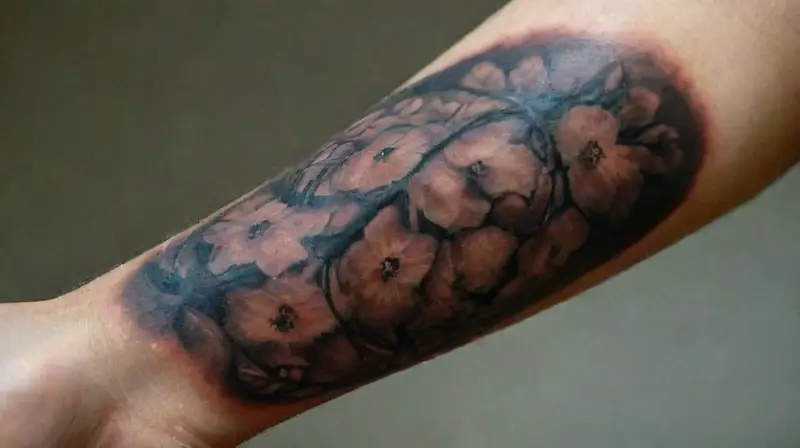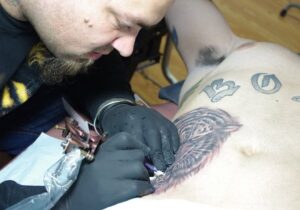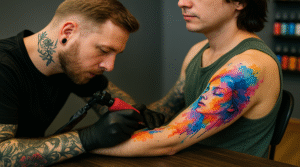Tattoo artistry has evolved significantly over the years, with artists constantly pushing the boundaries of what is possible on the skin. The new wave of styles integrates innovative techniques and bold concepts, making body art more expressive and unique than ever before. Enthusiasts and artists alike are exploring fresh ideas that challenge traditional norms, creating a vibrant landscape of creativity.
In today’s scene, it’s clear that experimental approaches are leading the charge in tattoo design. These emerging styles are not just about aesthetics but also about telling stories and making statements. As technology and artistic sensibilities converge, tattoo art is stepping into a new era of originality and individualism.
Neo-Traditional Tattoos
Neo-traditional tattoos build upon the classic traditional style but incorporate more intricate details and a wider color palette. This style embraces bold outlines while allowing for more subtle shading, giving each piece depth and dimension. Artists experiment with realistic textures that add a modern twist to timeless motifs.
The flexibility of neo-traditional designs makes them suitable for a variety of themes, from floral arrangements to mythological creatures. The focus on vivid colors and detailed linework ensures that each tattoo stands out as a piece of art. This style appeals to those looking for a balance between tradition and innovation.
Furthermore, neo-traditional tattoos are celebrated for their adaptability, making them perfect for large murals or small, delicate pieces. The style’s versatility allows for creative expression, blending influences from different cultures and eras. Such innovations keep the tradition alive while pushing its boundaries.
Watercolor Tattoos
Watercolor tattoo art draws inspiration from the fluidity and vibrancy of painting. Using techniques that mimic brush strokes and color blending, artists create designs that appear soft and dynamic. This style often features splashes of color and gradients that give a sense of motion and energy.
The approach involves minimal outlining, relying instead on the interplay of colors to define the design. The result is a stunning visual effect that captures the essence of a watercolor masterpiece. Many recipients love the dreamy, artistic aesthetic that watercolor tattoos evoke.
These tattoos are perfect for expressive, poignant images like florals, animals, or abstract designs. By embracing imperfection and spontaneity, watercolor art invites creative experimentation. It continues to evolve, inspiring artists around the world to develop new techniques.
Minimalist and Line Art Tattoos

Minimalist and line art tattoos focus on simplicity and clarity of form. Characterized by thin, clean lines and sparse shading, these designs emphasize elegance and subtlety. They are ideal for those who prefer refined, understated body decor.
Despite their simplicity, these tattoos can be surprisingly meaningful, often incorporating symbolic or personal elements. The use of negative space and minimal details challenges artists to convey complex ideas with basic shapes. Their sleek appearance makes them popular among modern designers.
Advancements in tattoo technology have allowed for ultra-fine line work, making these styles more precise than ever before. Furthermore, line art tattoos are highly adaptable, fitting well on small or conspicuous areas, offering endless possibilities for creative expressions.
Geometric and Abstract Tattoos
Geometric tattoos explore mathematical patterns and symmetry to create visually captivating designs. These tattoos often feature shapes such as triangles, circles, and polygons, combined into complex, mesmerizing arrangements. They are appreciated for their balance and precision.
Abstract tattoos extend this concept further by emphasizing freeform shapes and chaotic arrangements. They often invoke emotional responses through their unpredictable patterns and bold use of color. This style champions innovation in form and composition.
The fusion of technology and artistry has led to the development of digital tools that assist in designing intricate geometric and abstract tattoos. These innovations allow artists to craft highly customized and complex pieces that reflect personal identity and artistic vision.
Blackwork and Dotwork Styles
Blackwork tattoos rely heavily on solid black ink to create bold, striking visuals. This style makes use of dense shading and large black areas to form dramatic imagery. It emphasizes contrast and can be used to produce both intricate patterns and minimalist silhouettes.
Dotwork involves creating images through the precise placement of tiny dots, which build up shading and detail gradually. This meticulous technique lends a textured, almost tactile quality to the design. Dotwork is often used for spiritual or mystical themes.
Combining blackwork with dotwork has opened new frontiers for tattoo artistry, enabling the creation of depth and intricate patterns while maintaining a cohesive look. This fusion style invites continuous exploration of pattern, shadow, and form on the skin.
Surrealist and Fantasy Tattoos

Surrealist tattoos break the boundaries of reality by blending dreamlike elements into their designs. They often depict fantastical creatures, hybrid beings, or surreal landscapes that challenge viewers’ perceptions. This style encourages imagination and storytelling.
Fantasy tattoos draw inspiration from myth, legends, and fantasy worlds, capturing scenes of magic, adventure, and mythical creatures. The use of vibrant colors and detailed rendering makes these designs immersive and captivating.
Technological advances in digital illustration have empowered artists to craft highly detailed, three-dimensional scenes that seem to leap off the skin. These styles continue to evolve as a form of self-expression, inviting viewers into a world beyond the ordinary.
Biomechanical and Cyberpunk Tattoos
Biomechanical tattoos combine organic body features with mechanical elements, creating a futuristic appearance. These designs often simulate machinery, gears, and robotic parts intertwined with muscles and skeleton structures. The seamless integration is a testament to optical illusion techniques.
Cyberpunk tattoos explore themes of technology, dystopia, and digital landscapes. They often feature neon colors, circuit found patterns, and cybernetic enhancements. This style embodies a futuristic aesthetic that echoes the digital age.
Innovations in 3D printing and digital design tools have revolutionized biomechanical and cyberpunk tattoo creation. These advancements allow for highly detailed and realistic effects that captivate and immerse viewers into a cybernetic universe.
Conclusion
The landscape of tattoo art is currently experiencing an exciting wave of innovation, driven by artists eager to experiment with new styles and techniques. These artistic styles are not only pushing visual boundaries but also expanding the ways we think about body expression.
As technology continues to advance, tattoo artists are better equipped than ever to realize their most ambitious visions. The future of tattooing promises even more groundbreaking creations, blending art, science, and personal identity into stunning works on the skin.








